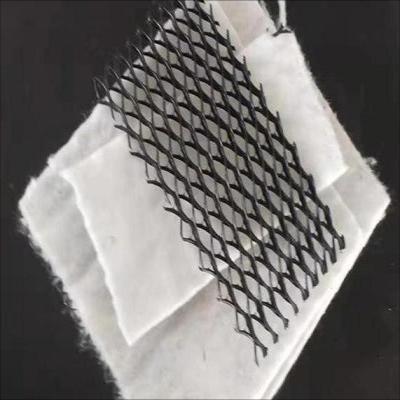一. Raw material selection and preparation
3D geotechnical Composite drainage network The main raw material of lattice is high-density polyethylene ( HDPE) Granules. These pellets are subject to strict screening and inspection to ensure that its quality meets the production requirements. Before production, the raw materials should be mixed in a certain proportion according to the production demand for subsequent processing.
二. Molding process
1、Melt plasticizing: Screened and mixed HDPE The granules are added to the dryer for heating and stirring, which can remove moisture and impurities in the raw materials. The raw materials enter the feeding opening and are extruded into the transverse high-temperature barrel through the spiral funnel. Under high temperature conditions, the raw materials are gradually melted and plasticized, which can form a uniform melt.
2、Die extrusion: After the molten material passes through the high-temperature barrel, it enters the die extrusion zone. The die extrusion zone consists of multiple extrusion heads and dies. By adjusting the position of the extrusion heads and the shape of the dies, parameters such as rib spacing, angle and thickness of the drainage grid can be controlled. During the extrusion process, the molten material is extruded into a three-dimensional space structure with drainage guide grooves, that is, the ribs of the drainage grid.
3、Cooling and stretching: The drainage grid ribs extruded by the die should be cooled and stretched to improve its strength and stability. During the cooling process, the ribs gradually solidify and shape; During the stretching process, the length and width of the ribs are expanded, enabling the formation of a complete drainage grid structure.
三. Thermal bonding and compounding
The other side of the three-dimensional geocomposite drainage grid should be bonded with base fabric materials such as non-woven geotextile or anti-seepage geomembrane. Before production, the base cloth should be inspected and finished to ensure that its quality meets the production requirements. It is also necessary to cut the base fabric into the appropriate size and shape according to the production needs. Then the prepared base cloth and the drainage grid ribs are thermally bonded and compounded. During the thermal bonding process, a firm bonding layer is formed between the base cloth and the drainage grid ribs by controlling parameters such as heating temperature and pressure. Also adjust the position and orientation between the base cloth and the ribs to ensure that the compounded drainage grid has a flat surface and good drainage performance.
四. Quality control and testing
In the production process of 3D geocomposite drainage grid, quality control and inspection are very important. Through strict quality control measures and testing methods, the quality of drainage grids can be ensured to meet relevant standards and requirements. Including regular testing of raw materials to ensure stable and reliable quality of raw materials; During the production process, real-time monitoring and detection of all links, including melting temperature, extrusion pressure, cooling speed and other parameters, should be carried out to ensure that the production process is stable and controllable.
五. Applications and advantages
Three-dimensional geocomposite drainage grids have a wide range of applications. In land consolidation, it can be used for land leveling and drainage, improving land utilization rate. In road construction, it can be used for the reinforcement and drainage of subgrade, increasing the bearing capacity and service life of roads. In water conservancy projects, it can be used for reinforcement and drainage of reservoirs, rivers and channels, and improve the safety and stability of water conservancy projects. It can also be used in landfill drainage, railway drainage, tunnel drainage and other fields.
The advantages of three-dimensional geocomposite drainage grid are mainly reflected in the following aspects:
1、Excellent drainage performance, which can remove accumulated water in the soil;
2、Strong bearing capacity, which can increase the shear strength and bearing capacity of the soil;
3、Simple construction, easy to lay and fix;
4、Corrosion resistance, acid and alkali resistance, long service life.
Post time: Mar-05-2025




